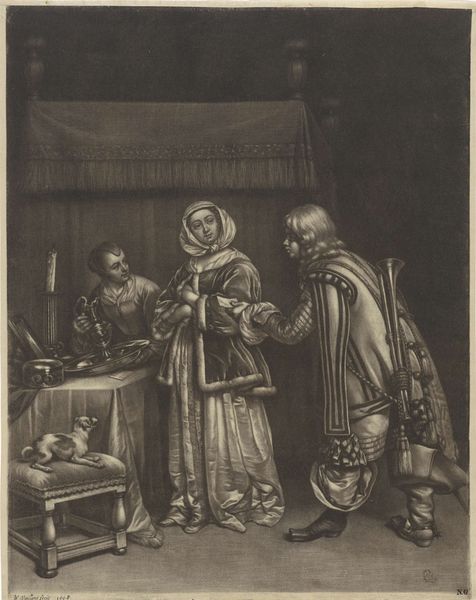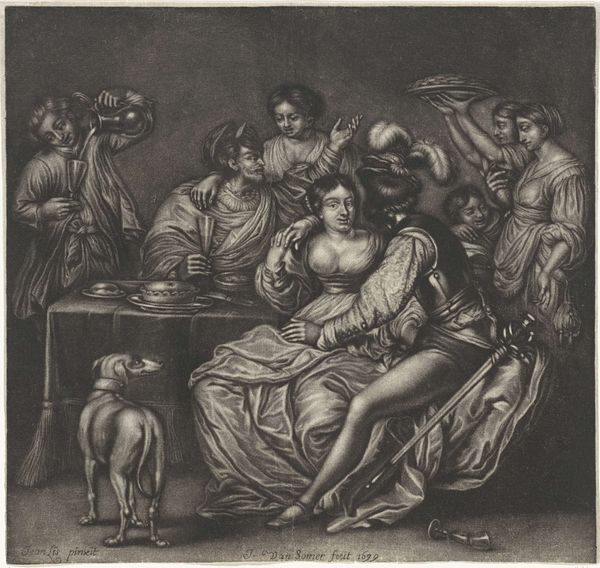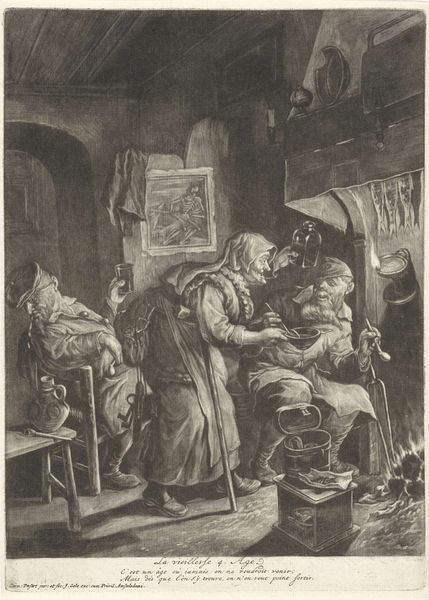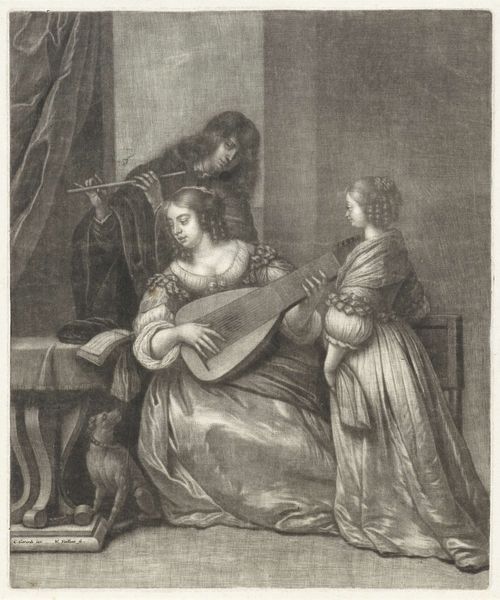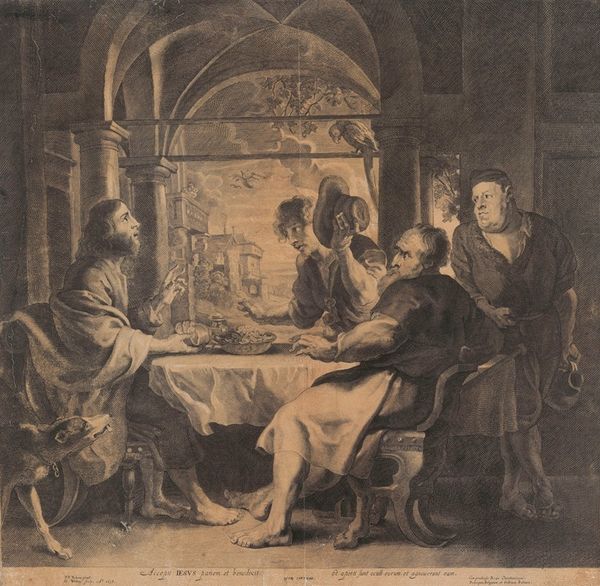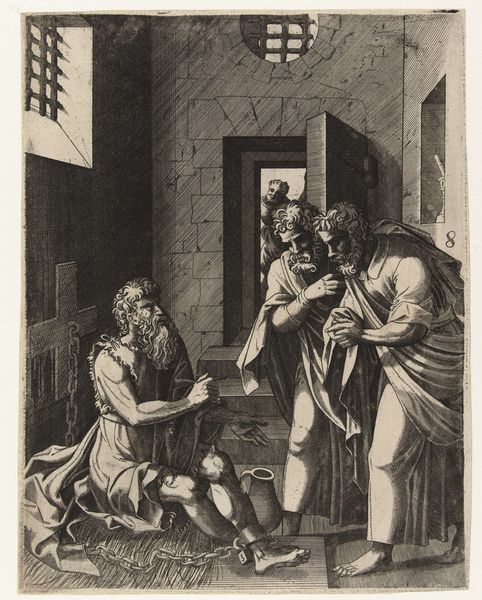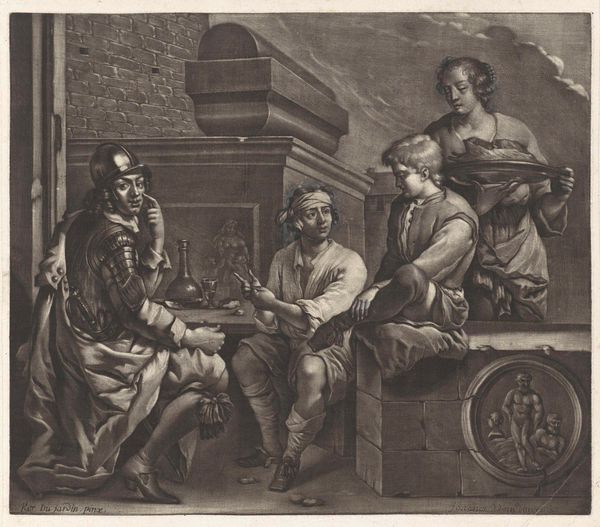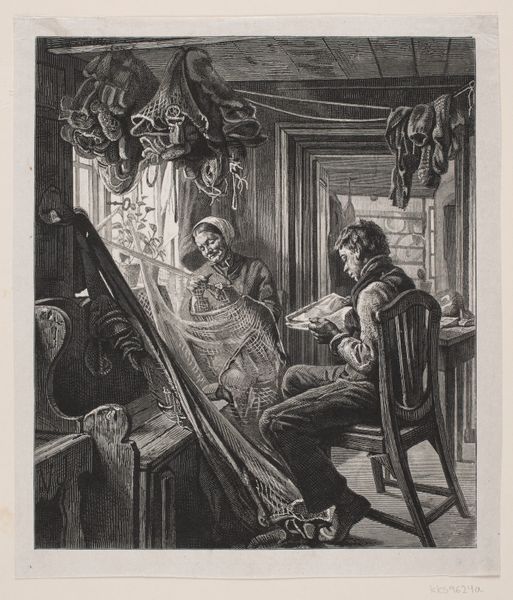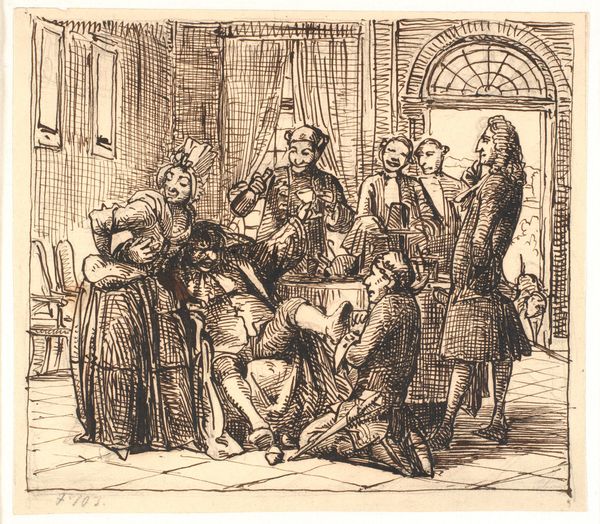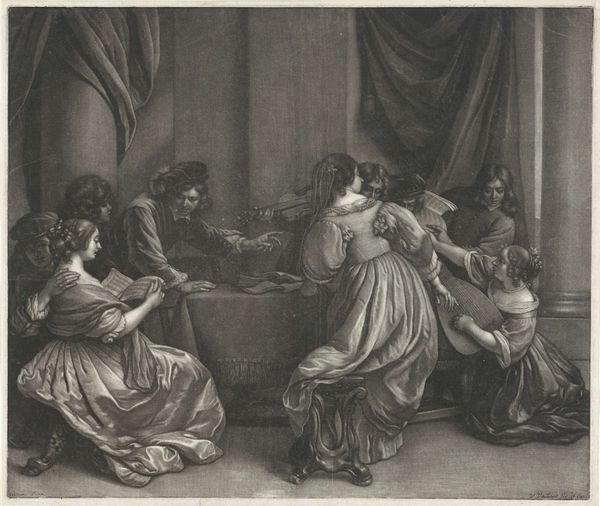
Dimensions: support: 869 x 1171 mm
Copyright: CC-BY-NC-ND 4.0 DEED, Photo: Tate
Editor: This is Augustus Leopold Egg's painting, "Beatrix Knighting Esmond." It's quite theatrical! What’s striking is the power dynamic being portrayed here, with the woman holding all the authority. How do you interpret this work in terms of gender and social roles? Curator: It’s interesting you note the power dynamic. Consider how Egg uses historical narrative to comment on Victorian social structures. The act of "knighting" becomes a symbolic inversion, challenging patriarchal norms. Do you see any other visual cues reinforcing this reading? Editor: The gazes, perhaps? The women in the background seem to be witnesses, almost judging. Curator: Exactly! Their presence amplifies the subversion. Egg invites us to question traditional gender roles and consider the agency women might exert, even within restrictive historical contexts. What have you learned looking at this painting? Editor: I now see that historical paintings can be powerful commentaries on contemporary society! Curator: Precisely. Egg used history to reflect and critique his own time.
Comments
tate 6 months ago
⋮
http://www.tate.org.uk/art/artworks/egg-beatrix-knighting-esmond-n01385
Join the conversation
Join millions of artists and users on Artera today and experience the ultimate creative platform.
tate 6 months ago
⋮
This picture illustrates a scene from the History of Henry Esmond Esq by W.M. Thackeray (1811-63), published in 1852. When it was exhibited at the Royal Academy in 1858, the catalogue entry included this quotation: '"Kneel down," says Mrs Beatrix, "we dub you knight with this," and she waved the sword over his head.' This kind of literary narrative subject was extremely popular with the Victorian middle classes, but the most commonly illustrated novels tended to be by 17th and 18th century English writers such as Oliver Goldsmith (1728-1774) and Laurence Sterne (1713-1768). The Art Journal considered Thackeray's novel an 'eccentric source' (Art Journal, vol.II, June 1858, p.162) for Egg; and Holman Hunt wrote to Edward Lear that he considered Egg's 'true and perfect painting' wasted on an 'unworthy subject' (letter dated 16 April 1857). The scene takes place in an elegantly-furnished, wood-panelled room, which is lit by the long window on the left. Esmond leans on one knee, looking up at Beatrix as she taps him on the shoulder with a fencing foil. In her left hand she is holding a scabbard and a blue sash. Behind Esmond, Beatrix's mother and the old Marquesa look on. The painting was created as a pendant to Esmond Returns after the Battle of Wynendel (1857, Walker Art Gallery, Liverpool), exhibited the previous year. Although painted before Beatrix Knighting Esmond, the Liverpool picture shows a later moment in the same scene, with Beatrix kneeling to fasten the sword and sash around Esmond, who is standing with one arm raised. The furnishings are identical in both paintings, but the sideboard with three copper plates is only just visible in the Liverpool picture. In comparison to earlier works such as Scene from 'The Devil upon Two Sticks' (1844, Tate N00444) the figures are more solidly painted and the handling much tighter. The close attention to detail, bright colours and the interest in light reveal the influence of Egg's contact with Pre-Raphaelite art, but the subject-matter is conventional by comparison with works such as Past and Present 1-3 (Tate N03278, N03279 and N03280), also exhibited in 1858. Further reading:Christopher Wood, Victorian Painting, London 1999, pp.30-39. Frances FowleDecember 2000



